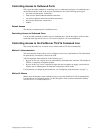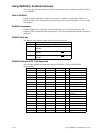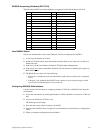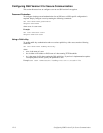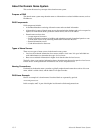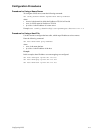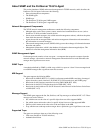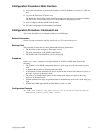13-2 About the Domain Name System
About the Domain Name System
This section discusses key concepts of the domain name system.
Purpose of DNS
The domain name system maps domain names to information associated with these names, such as
IP addresses.
DNS Components
DNS components include:
• A distributed database consisting of domain names and associated information
• A hierarchical system of domain name servers that maintain the database and use it to respond to
requests for information about a particular domain name, such as its IP address
• Domain name resolvers that
— Accept requests from users
— Satisfy information requests by building and submitting properly formulated queries to one
or more name servers or by retrieving information from a local host file
— Return information to users
— Cache information for future use
Types of Name Servers
There are two types of name servers in the domain name system:
• Local servers maintain information for resources within a local zone. It is up to individual net-
work administrators to determine the scope of a local zone.
• Root servers maintain information in higher-level domains than do local servers.
Typically, when a user requires information about a domain name, the resolver queries a local server.
If local servers cannot provide the information, root servers are queried next.
Naming Conventions
Each node in the domain name system has a globally unique domain name that consists of its own
name, which is called a label, and the labels of all superior nodes.
DNS Name Example
Here is an example of a domain name. Note that labels are separated by periods:
mn07.amalgamated.com
In this example, mn07 is part of the higher-level domain called amalgamated.com.




